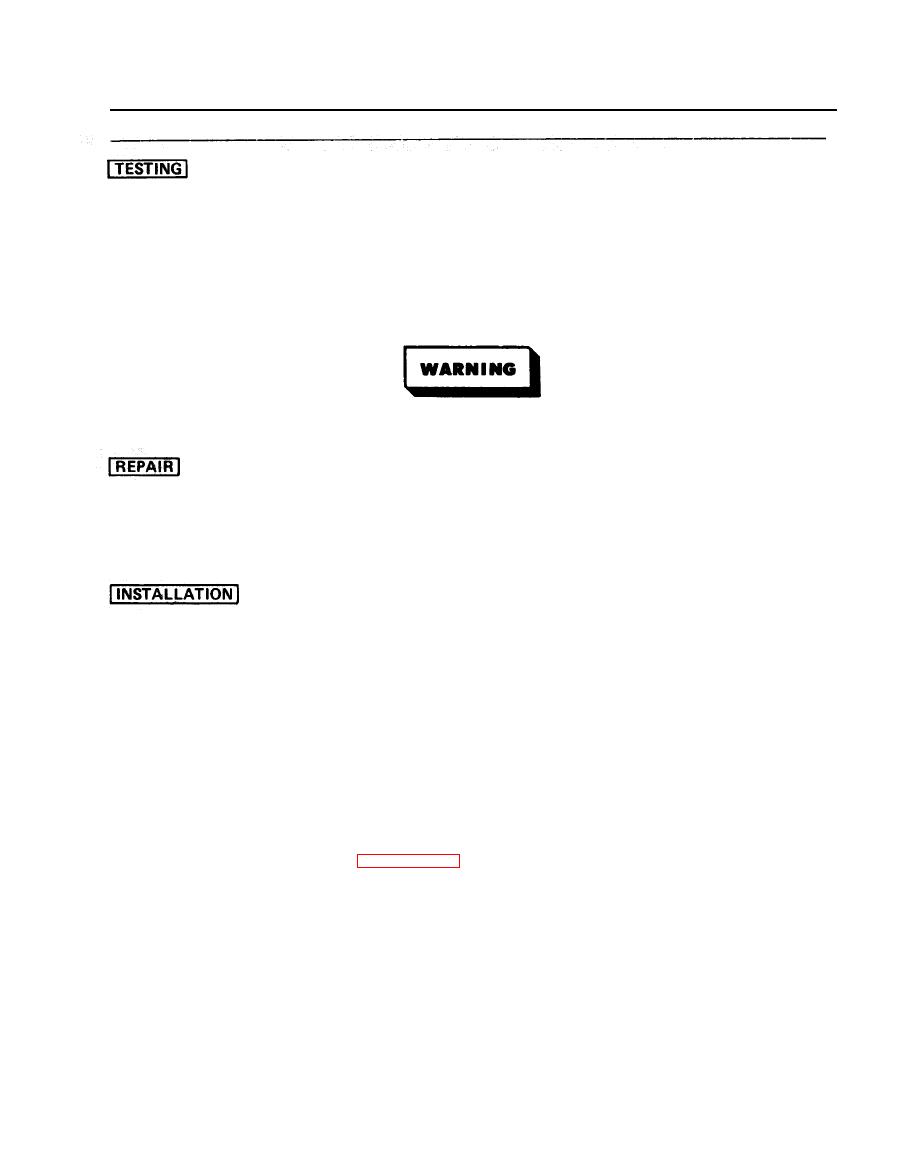 |
|||
|
|
|||
|
|
|||
| ||||||||||
|
|
 TM 5-4120-374-13
REMARKS
ACTION
LOCATION/lTEM
1 0 . Evaporator Coil a. Check all evaporator coil tubing and sweat fittings with a
General Electric Type H-2 Halogen Test Detector (or
approved equal).
b . Calibrate the detector with a General Electric LS-20 leak
standard (or approved equal) for a pure refrigerant leak rate
of 0.1 ounce per year.
c . Mark all spots where leaks are noticed.
d . Repair leaks or replace evaporator coil.
creates phosgene gas.
11. Evaporator Coil
a. Repair minor leaks or holes by soldering.
b. Use a silver solder with a 50% silver capacity and a melting
point of approximate y 1160F (634.8C).
c. Straighten bent fins prior to installation.
HOUSING INTERIOR
a. Align holes in evaporator coil with holes in base.
12. Evaporator Coil
b. Secure evaporator coil to base from the underside using four
(4) screws.
c. Secure evaporator coiI to buIkhead with six (6) screws.
d. Connect and solder two (2) refrigerant lines to evaporator
coil.
e. Align holes in frame with holes in base.
f. Secure frame to base with eight (8) screws.
g. Secure frame to condenser coil with two (2) screws.
h. Connect suction line to evaporator coil approximately
two (2) inches below header.
i. Refer to paragraph 5-7 and solder suction line.
j. Connect refrigerant line between evaporator coil and
expansion valve and tighten flare nut.
5-25
|
|
Privacy Statement - Press Release - Copyright Information. - Contact Us |